Dogs and cats are two of the most well-known and cherished pets in the world, but they also have quite varied physical and behavioral traits.
Are dogs stronger than cats? is a query that many pet owners and animal enthusiasts may have.

The answer is not straightforward since it relies on how we define and evaluate strength and what variables we take into account when comparing these two species.
In this article, we will look at some of the ways that cats and dogs show their strength, as well as how their capacities and adaptations vary.
Contents
How Strong Are Dogs?
Dogs’ strength varies according to breed, size, and individual training.
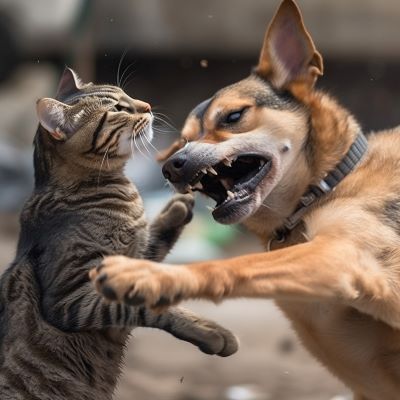
Dogs are substantially stronger than humans on average, with robust jaw muscles that allow them to produce great biting force, especially in bigger breeds such as the Kangal or Mastiff, which may create pressures exceeding 300 pounds per square inch (psi).
Furthermore, their physical strength allows them to do tasks such as lifting big objects, sprinting quickly, and displaying extraordinary agility, however the level of their strength varies greatly across breeds and individual dogs.
How Do Dogs and Cats Compare in Strength?
In the mammalian family tree, dogs and cats come from distinct branches.
Dogs belong to the group of animals known as Carnivora, which includes omnivorous and carnivorous species with unique teeth and claws for scavenging and devouring meat[1].
Cats belong to the suborder Feliformia, which also contains other creatures that resemble felines and have claws that retract, as well as those with highly developed hearing and smell senses.
Cats and dogs have evolved to fit into various habitats and ways of life.
Dogs are more gregarious and cooperative creatures that hunt and live in packs. Cats are lonely, autonomous creatures who hunt their prey by being agile and stealthy[2].
Their physical characteristics and skills are impacted by these distinctions.
According to some studies, dogs have more physical strength than cats, so the answer to your question is no.
When compared side by side, a dog typically has double the power of an average cat, but this is highly variable depending on each animal’s breed and current physical condition.
Strength in Size of Dog vs Cat
Looking at the size differences between dogs and cats is one of the easiest methods to gauge their relative toughness.
Compared to cats, dogs are often bigger and heavier, which gives them an edge in terms of strength and stamina.
Domestic dogs typically weigh around 18 kg, whereas domestic cats typically weigh around 4 kg.

Naturally, there is a wide range of weights within each species, with some dog breeds weighing up to 80 kg and some cat varieties weighing as little as 2 kg[3].
But when it comes to strength, size is not everything.
Compared to dogs, cats have a greater muscle-to-fat ratio, which indicates that they have more lean muscle mass overall.
As a result, they have more strength and speed relative to their size, as well as greater flexibility and agility.
In addition, cats have a lower center of gravity than dogs, which enhances their ability to balance and move about.
Strength in Bite of Dog vs Cat
Examining the force that can be applied with their jaws, or the “bite force,” is another approach to contrasting the power of dogs and cats.
The number and arrangement of teeth, the size and form of the skull, the length and width of the jaw, and the mass and contraction of the jaw muscles are all factors that affect bite force.
On average, dogs’ bites are more powerful than cats’.

Domestic dogs had a biting force of 162 psi (pounds per square inch), whereas domestic cats had a bite force of 58 psi, according to research that evaluated the bite force of 39 mammalian species[4].
This does not imply that a dog’s bite is more dangerous than a cat’s, though.
Particularly with their canine teeth, which are made to penetrate and puncture their prey’s skin and internal organs, cats have sharper teeth than dogs do.
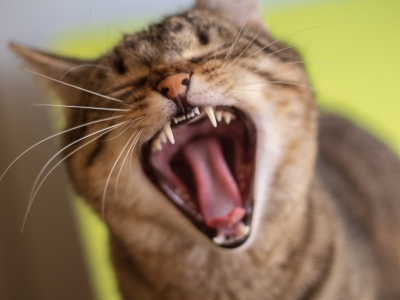
In addition, cats bite more quickly than dogs do, allowing them to administer more bites in a shorter period of time.
Strength in Jumping of Dog vs Cat
Another way to compare the strength of dogs and cats is by looking at their jumping ability, which is the height or distance that they can leap with their legs.
Jumping ability is influenced by several factors, such as the length and angle of the legs, the elasticity and contraction of the muscles and tendons, and the coordination and timing of the movements.

On average, cats are far better jumpers than dogs. The maximum height at which a domestic cat can jump is six times its body length, or 2.4 meters.
Domestic dogs have a leap height of up to 1.5 times their body length, or 0.9 meters.
Dogs’ hind legs are shorter and less strong than those of cats, which increases the propulsion and acceleration of their jumps.
Compared to dogs, cats’ spines are also more flexible, allowing them to jump with their bodies extended and their backs arched.
Breed wise Strength of Dog vs Cat
It’s vital to keep in mind that different breeds of dogs and cats vary in strength depending on their size, build, and unique characteristics when comparing the strength of different breeds.
Strength may also appear in a variety of ways, including pulling force, endurance, and agility.
Here are a few examples of dog and cat breeds renowned for their power:
Dogs:
Saint Bernard
Saint Bernards are large and powerful dogs known for their strength and endurance.
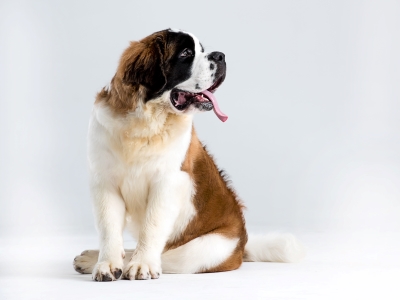
They were originally bred for rescue work in the Swiss Alps due to their ability to navigate difficult terrain while carrying heavy loads.
English Mastiff
One of the largest and strongest dog breeds is the English Mastiff.

They are physically strong dogs because of their sturdy and muscular physique.
Rottweiler
Strong and hardy, Rottweilers have a long history of being employed for numerous jobs, including guarding and herding.

They are powerful working dogs thanks to their protective instincts and strength.
Cats:
Maine Coon
The Maine Coon is one of the biggest kinds of domestic cats and is renowned for its imposing size and power.

They have a strong body because of their muscular build and adaptation to cold regions.
Savannah
The Savannah cat is a hybrid breed that often inherits the strength and athleticism of its wild ancestor, the serval.
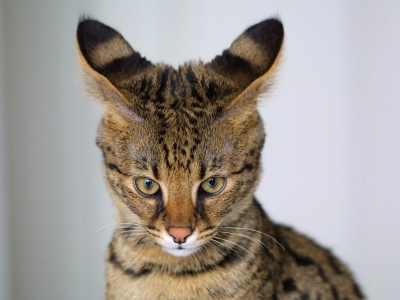
They are agile jumpers and have a lean, muscular body.
Bengal
Bengal cats stand out from other cats thanks to their unusual look and well–developed muscles.
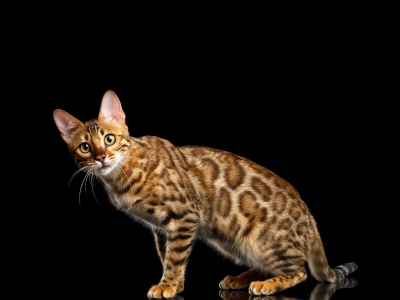
They can climb with agility and are quite spirited.
FAQs
Do larger dogs have more strength than smaller dogs?
Generally, larger dogs tend to have more physical strength due to their greater muscle mass and size. However, smaller dog breeds can also be surprisingly strong for their size.
Are there strong cat breeds?
While cats may not exhibit raw strength like some large dog breeds, certain cat breeds, such as the Maine Coon, can be relatively larger and more robust, showcasing considerable strength for their species.
Is it fair to directly compare the strength of dogs and cats?
Directly comparing the strength of dogs and cats can be challenging due to their distinct evolutionary histories and domestication purposes. They have evolved with different physical attributes to suit their specific roles and lifestyles.
Can the strength of dogs and cats be measured scientifically?
Strength can be measured to some extent using metrics like muscle mass, bite force, or endurance. However, comparing the overall strength of dogs and cats is not a straightforward scientific question and involves various subjective and contextual factors.
Which species, between dogs and cats, is more suitable as a pet?
The suitability of dogs or cats as pets depends on individual preferences, living situations, and lifestyle. Both species offer unique companionship and benefits, and the choice between them should consider factors beyond just strength.
Conclusion
In terms of absolute strength, dogs outweigh cats. Cats are not weak or inferior creatures, despite what this may imply.
When compared to dogs, cats are stronger because they are more efficient with their resources.
Speed, agility, balance, reflexes, intellect, and senses are just a few of the benefits cats have over dogs.
So it is not easy to determine if dogs are stronger than cats. What you consider and how you define strength will vary.
Cats and dogs are both great creatures with unique strengths and faults.
Respecting their differences and celebrating their commonalities is the finest approach to showing them that you care about them.
Reference:
- Carnivores and omnivores | Animal Welfare Institute
- Differences between dogs and cats | Hill’s Pet Nutrition
- Is my dog or cat a healthy weight? | U.S. Food And Drug Administration
- Bite forces and their measurement in dogs and cats | National Library of Medicine

Dania is a dog groomer living in California, who loves styling dogs. She often uses dog accessories to keep them distracted while grooming. She is also a dog parent to a Pomeranian, Duke. It’s because of him she is always on a lookout for the best dog foods, toys, other dog accessories, and ways to keep him equipped, healthy and happy.


